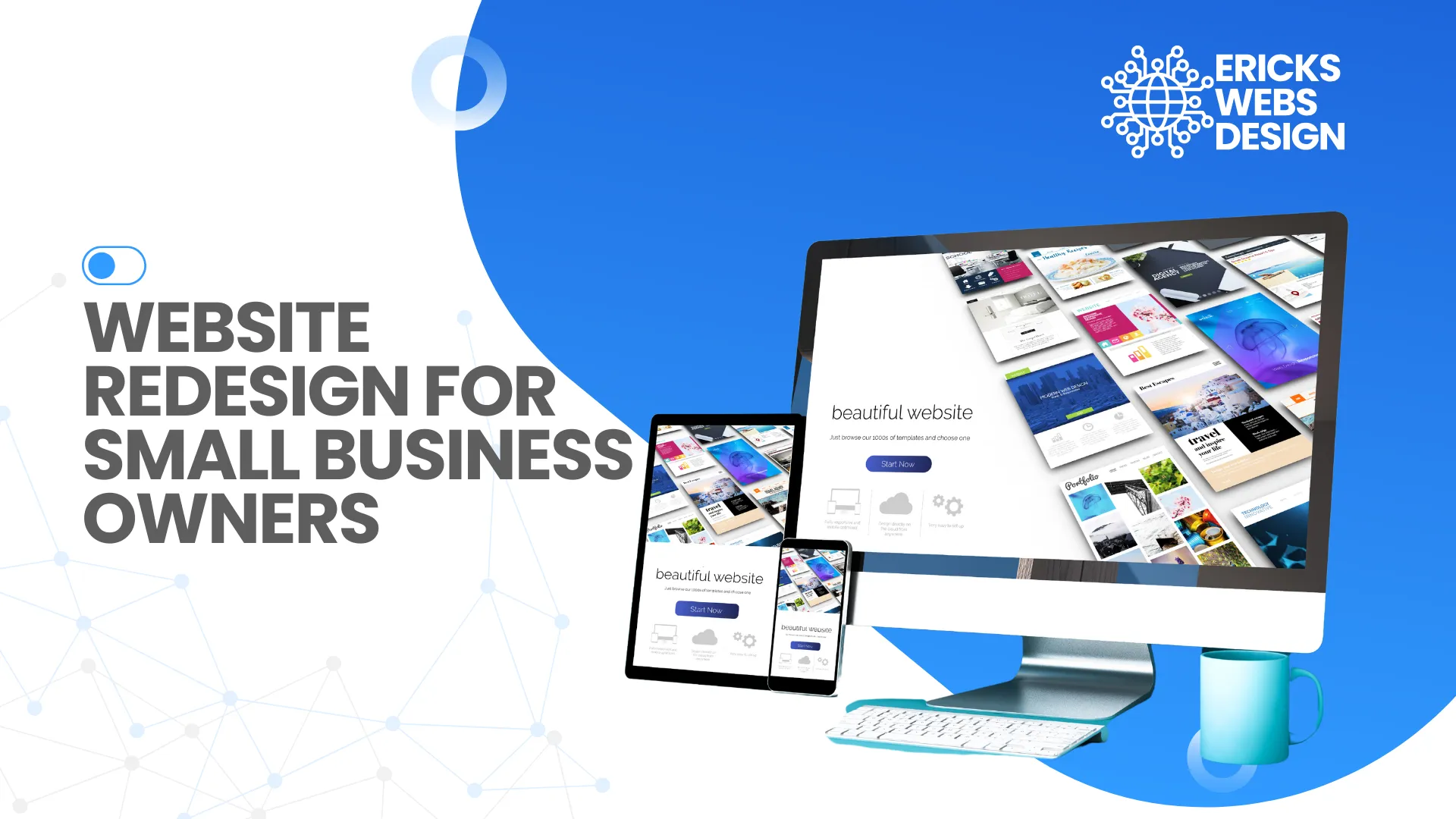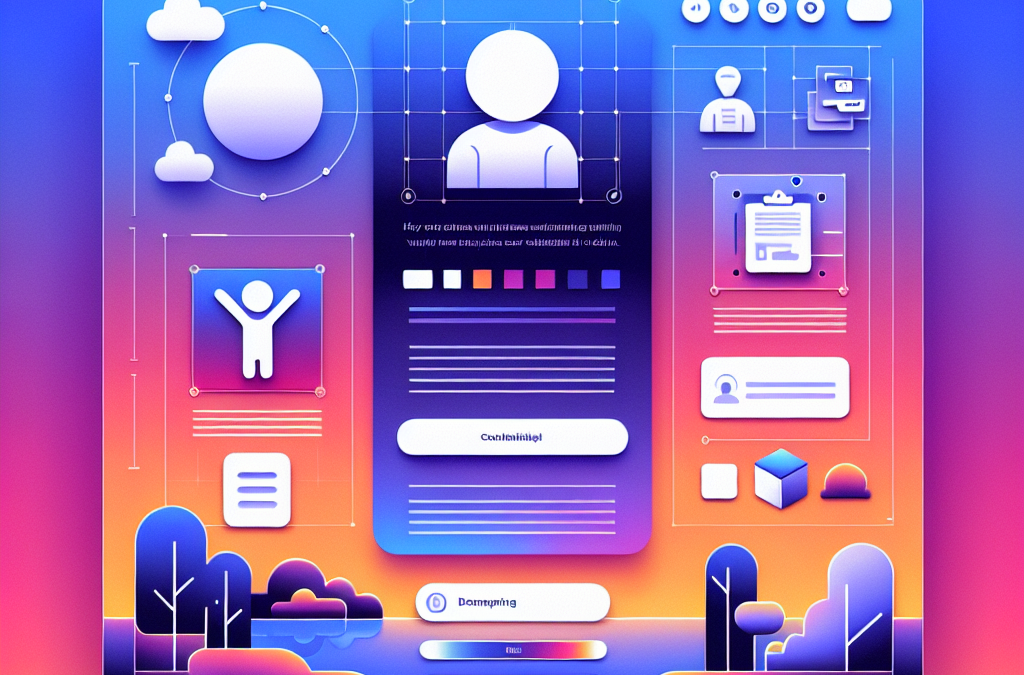Website Redesign for Small Business Owners: When It’s Needed and What to Look For
Introduction
A website is often the first impression potential customers have of your small business. As the digital face of your brand, it must be appealing, functional, and up-to-date. However, many small business owners struggle to understand when a website redesign is necessary and how to approach it effectively. In this article, we will explore the key indicators that signal the need for a redesign and provide guidance on what to focus on during the process.
What is a Website Redesign?
Website redesign involves reimagining the structure, layout, visuals, and content of a website to improve its performance and user experience. Unlike a simple update, which may involve minor changes to content or images, a redesign can mean a complete overhaul of design elements, navigation, and functionality. The main goal is to make the website more user-friendly, visually appealing, and aligned with the latest digital trends.
Why Website Redesign is Essential for Small Businesses
Redesigning a website can be a game-changer for small businesses, offering several benefits:
- Adapting to Changing User Needs and Behaviors: As user preferences evolve, websites must adapt to remain relevant and functional.
- Enhancing Brand Identity and Credibility: A well-designed website helps establish trust and credibility, crucial for small businesses trying to gain customer loyalty.
- Staying Ahead of Competitors: Regular redesigns ensure that your website aligns with industry trends and keeps you competitive in the digital landscape.
Signs Your Website Needs a Redesign
If you’re unsure whether your website needs a redesign, look for these clear indicators:
- Outdated Design or Look: If your website looks like it’s from another era, it may not be engaging enough for modern users.
- Poor Website Performance and Loading Speed: Slow loading times can increase bounce rates and hurt SEO rankings, making redesign essential.
- Lack of Mobile Responsiveness: With over half of all web traffic coming from mobile devices, your website must be mobile-friendly.
- Low Conversion Rates: If visitors aren’t converting into leads or customers, a redesign that focuses on user experience (UX) and clearer CTAs may help.
- High Bounce Rates: If users leave your site quickly, it’s a sign that the content, design, or navigation may not be user-friendly.
- Difficulty in Content Management: If updating content is cumbersome, it might be time to move to a more flexible content management system (CMS).
Understanding User Experience (UX) as a Core Driver for Redesign
User experience (UX) is a critical factor in website success. A website redesign should focus heavily on UX improvements, as it determines how visitors interact with your site.
- What is UX and Why It Matters: UX refers to the overall experience users have while navigating your site. A good UX increases engagement, satisfaction, and the likelihood of conversions.
- Key UX Metrics to Consider During a Redesign: Analyze metrics such as page load times, bounce rates, average session duration, and user feedback. Improving these elements can lead to higher user satisfaction and conversion rates.
Impact of Mobile Responsiveness on Website Redesign
In today’s digital world, a mobile-friendly website is not optional—it’s essential.
- Importance of Mobile-Friendly Design: Websites that aren’t mobile-responsive can negatively impact user experience, leading to lost leads and customers.
- Statistics on Mobile Usage and Conversion Rates: Studies show that mobile users are more likely to make purchasing decisions online. If your site is not optimized for mobile, you risk losing significant business opportunities.
The Role of SEO in Website Redesign
Integrating SEO during a redesign is crucial to maintain or improve your website’s search engine rankings.
- SEO Considerations During Redesign: Ensure that key elements like meta tags, headings, and alt text for images are optimized. Retain existing high-performing content and redirects to avoid losing search rankings.
- Ensuring On-Page Optimization: Make sure the redesign aligns with your target keywords, internal linking, and URL structure. Proper on-page optimization during redesign can boost organic visibility and drive more traffic.
Importance of Branding in Website Redesign
Your website is an extension of your brand, and the redesign should reflect your brand’s identity.
- Reflecting Your Brand’s Identity Through the Website: Use consistent colors, fonts, and messaging that align with your brand’s voice and values.
- Consistency in Color Schemes, Fonts, and Messaging: A cohesive look across your website ensures that users can immediately recognize your brand, fostering trust and credibility.
Evaluating Your Current Website’s Performance
Before starting a redesign, evaluate how your current website performs. This will help identify what needs to be changed and what can be retained.
- Using Analytics Tools to Assess Traffic and User Behavior: Tools like Google Analytics can help you track user behavior, identifying pages with high bounce rates or low engagement.
- Identifying Key Pages that Need Improvement: Determine which pages are underperforming and require significant changes. This analysis will guide your redesign priorities and improve overall website effectiveness.
Key Elements to Include in a Website Redesign
When redesigning a website, focus on critical elements that enhance usability, design, and conversions.
- Homepage Design Improvements: Your homepage should be clean, engaging, and easy to navigate, setting the tone for the rest of the site.
- Navigation Structure: Implement a user-friendly navigation system that helps users find what they’re looking for quickly. Clear menus, breadcrumbs, and internal links improve the user experience.
- Call-to-Action (CTA) Optimization: Ensure CTAs are strategically placed and visually distinct, encouraging users to take desired actions (e.g., “Contact Us,” “Buy Now”).
- Content Update and Strategy: Fresh, relevant, and engaging content improves user engagement and SEO rankings. Update text, images, videos, and other media to align with your brand’s current messaging.
Choosing the Right Web Designer or Agency for the Redesign
Working with the right web designer or agency can make or break your website redesign project.
- Factors to Consider: Experience, Portfolio, and Pricing: Look for designers or agencies with experience in your industry, an impressive portfolio, and transparent pricing models.
- Benefits of Hiring Professionals vs. DIY Approaches: While DIY website builders can save costs, hiring professionals ensures that your website is optimized for performance, SEO, and user experience.
Budgeting for a Website Redesign
Redesigning a website involves costs, but it’s a worthwhile investment if done right.
- Average Costs of Redesign for Small Businesses: The cost of a website redesign can vary widely depending on the size, complexity, and requirements of the project. Budgeting between $3,000 and $10,000 is common for small businesses.
- Cost vs. Value Analysis: Focus not just on the cost, but the value the redesign will bring. A well-executed redesign can lead to increased traffic, conversions, and overall business growth.
Step-by-Step Process of a Website Redesign
A systematic approach to website redesign ensures that the process is efficient and effective.
- Planning and Strategy: Define your goals, target audience, and design preferences before the redesign begins. This strategic phase sets the foundation for a successful redesign.
- Design Mock-Ups and Wireframes: Work with designers to create mock-ups and wireframes that give a visual representation of the new site layout.
- Development and Implementation: Once the design is finalized, the development phase begins, involving coding, CMS integration, and content uploading.
- Testing and Launch: Conduct rigorous testing for functionality, responsiveness, and performance before launching the redesigned site. Make adjustments based on feedback to ensure a smooth user experience.
Post-Redesign: Measuring Success and ROI
Once the redesign is live, it’s crucial to measure its impact and return on investment (ROI).
- Key Metrics to Track After Redesign: Monitor conversion rates, traffic, bounce rates, and engagement metrics to evaluate the redesign’s effectiveness.
- Analyzing the Impact of Redesign on Business Growth: Review whether the redesign has improved lead generation, sales, and customer retention. Positive changes indicate a successful redesign.
Conclusion
A website redesign can be a transformative step for small businesses, enhancing user experience, improving brand perception, and driving business growth. By understanding when and why a redesign is needed and what key factors to focus on, small business owners can ensure their website remains a powerful tool for online success.
FAQs
- How often should a website be redesigned?
- Typically, a website should be redesigned every 2-3 years to stay updated with design trends, technology, and user behavior.
- Can I redesign my website myself?
- Yes, you can use DIY website builders, but hiring professionals is recommended for better results in terms of UX, SEO, and functionality.
- How long does a website redesign typically take?
- Depending on the scope, a website redesign can take anywhere from 4 to 12 weeks.
- What is the difference between a website refresh and a redesign?
- A refresh involves minor changes (e.g., new content or images), while a redesign involves a complete overhaul of design, layout, and structure.
- Will redesigning my website impact my SEO?
- Yes, it can improve SEO if done correctly. Retain existing high-performing content, use proper redirects, and ensure on-page optimization to maintain or boost rankings.










